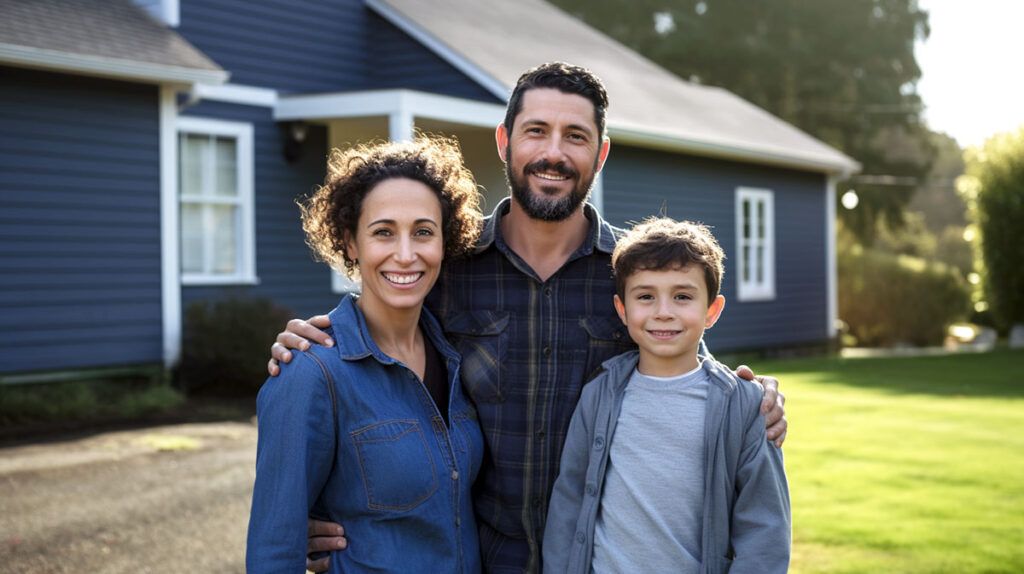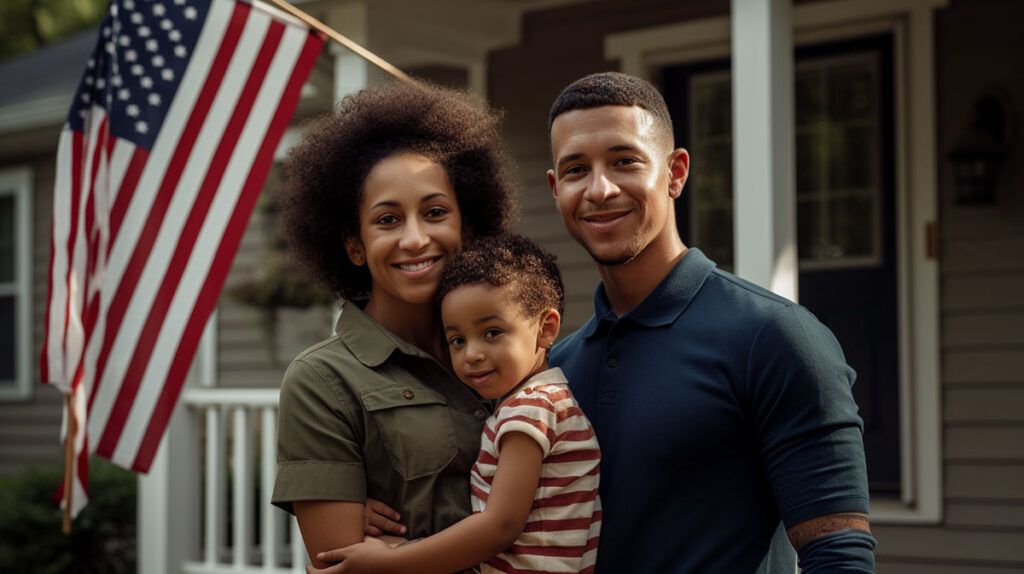39 Housing Assistance Programs for Renters and Homeowners in 2025

Affordable housing is becoming more important than ever in our current economy. With inflation on the rise and the cost of living increasing, many people find it hard to manage their expenses. One of the biggest challenges is finding a decent place to live.
As prices for everyday items go up, wages often don’t keep pace. This mismatch makes it tough for many Americans to cover their monthly bills. Rent and mortgage payments can eat up a large portion of income, leaving little for other necessities like food, healthcare, and education.
But there’s some good news. Several programs exist to help people find and keep affordable housing. These initiatives provide lower-cost housing options to those in need. They often come in the form of subsidized housing, rent control programs, or tax incentives for affordable housing developers.
Keep reading to discover all the programs and services that can help provide affordable housing for all Americans.
HUD Housing Assistance
⭐ Section 8 Housing Choice Vouchers
The Section 8 Housing Choice Voucher Program is a major initiative under the Department of Housing and Urban Development (HUD). The program assists low-income families, the elderly, and disabled individuals to afford decent, safe, and sanitary housing.
[starbox color=#add8e6]
- How It Works: Participants can choose their own housing which meets program standards; the voucher pays a major part of the rent.
- Eligibility Requirements: Available to low-income families, elderly, and disabled individuals.
- How To Apply: Contact your local Public Housing Agency (PHA).[/starbox]
This housing assistance program allows participants the freedom to choose their own housing, provided it meets the program’s requirements. The voucher covers a substantial portion of the rent, with the tenant typically paying 30% of their monthly income towards rent and utilities.
This flexibility enables recipients to seek housing in a variety of locations, not limited to specific subsidized housing projects. It’s a key resource for those who need financial assistance to secure a suitable living space in the private market.
⭐ Public Housing
HUD’s Public Housing program offers affordable rental houses or apartments specifically designed for low-income families, the elderly, and persons with disabilities. This is not privately owned housing – each property is owned and managed by a local public housing agency (PHA).
[starbox color=#add8e6]
- How It Works: Provides rental homes or apartments, managed by local PHAs.
- Eligibility Requirements: Aimed at low-income families, elderly, and persons with disabilities.
- How To Apply: Apply through your local Public Housing Agency.
[/starbox]
Public housing units provide a more stable and affordable housing option for those who struggle with the high costs of the private housing market. Rent in these units is typically based on the family’s income to ensure that housing remains affordable.
⭐ Emergency Solutions Grants Program (ESG)
The Emergency Solutions Grants Program (ESG) is designed to help individuals and families quickly regain stability in permanent housing after experiencing homelessness or a housing crisis.
[starbox color=#add8e6]
- How It Works: Emergency Solutions Grants help individuals and families find permanent housing after homelessness.
- Eligibility Requirements: For those experiencing homelessness or housing crisis.
- How To Apply: Contact your local HUD office.
[/starbox]
This program extends beyond traditional shelter support by providing funds for street outreach, quality improvement of emergency shelters, and homelessness prevention. For more information and assistance, contact your local HUD office.
⭐ HUD-VASH Vouchers for Veterans
The HUD-VASH program is a collaborative effort between the HUD and the Veterans Affairs (VA) to assist homeless veterans. This program combines HUD’s housing vouchers with VA’s supportive services to help veterans find and maintain stable housing.
[starbox color=#add8e6]
- How It Works: Combines HUD housing vouchers with VA supportive services.
- Eligibility Requirements: Homeless veterans.
- How To Apply: Contact the local Veterans Affairs office.
[/starbox]
Through HUD-VASH, veterans receive a voucher to help cover the cost of rent, and the VA provides ongoing support services like health care, mental health treatment, and substance abuse counseling. This integrated approach ensures that veterans not only get a place to live but also receive the necessary support to address other challenges they may be facing.
Rental Assistance Programs

⭐ State-Sponsored Rental Assistance Programs
State-Sponsored Rental Assistance Programs offer aid to residents struggling with housing costs.
[starbox color=#add8e6]
- How It Works: Offers rent subsidies and utility bill assistance.
- Eligibility Requirements: Varies by state.
- How To Apply: Visit your state’s public housing office.
[/starbox]
These state-level programs often include rent subsidies, emergency rental payments, and assistance with utility bills. Visit your state’s public housing office to find available assistance programs.
⭐ Local Government Assistance Programs
Local Government Assistance Programs are tailored to meet the unique housing needs within their communities. For example, in New York, the New York City Rental Assistance Program (RAP) offers subsidies and emergency support to city residents.
[starbox color=#add8e6]
- How It Works: Tailored to local housing needs, offers subsidies and support.
- Eligibility Requirements: Varies locally.
- How To Apply: Contact your local PHA office.
[/starbox]
Your local PHA office will have information about available assistance programs in your community.
⭐ Local Housing Authority Programs
Local Housing Authority Programs provide rental assistance or subsidized housing options in specific cities or counties. These authorities often have a range of programs designed to assist residents with lower rents and well-maintained properties.
[starbox color=#add8e6]
- How It Works: Offers a range of rental assistance and housing options.
- Eligibility Requirements: Varies by city or county.
- How To Apply: Visit your nearest HUD or PHA office.
[/starbox]
Each program varies depending on the state and city where you live. You can learn more by visiting your nearest HUD or PHA office.
⭐ Emergency Rental Assistance
Emergency Rental Assistance programs help individuals facing immediate housing crises, offering short-term aid to prevent homelessness and stabilize housing situations.
[starbox color=#add8e6]
- How It Works: Provides short-term help for immediate housing crises.
- Eligibility Requirements: Those in urgent need of housing assistance.
- How To Apply: Contact local public assistance office.
[/starbox]
These programs play a key role in providing emergency support to those in dire need of housing assistance. Reach out to your local public assistance office to find an emergency rental assistance program in your community.
⭐ Housing First Initiative
Housing First is a policy focused on quickly providing permanent housing to Americans experiencing homelessness. Housing First programs are typically operated by a variety of organizations, including local governments, non-profit groups, and sometimes state or federal agencies. These programs are often part of broader homelessness reduction initiatives and receive funding from a mix of sources, including government grants, charitable donations, and other public or private funds.
[starbox color=#add8e6]
- How It Works: Quickly provides permanent housing to reduce homelessness.
- Eligibility Requirements: Homeless individuals.
- How To Apply: Contact local non-profit groups or government agencies.
[/starbox]
At the federal level in the United States, the Department of Housing and Urban Development (HUD) supports and promotes the Housing First model through funding and policy guidance. HUD collaborates with local Continuums of Care, which are regional or local planning bodies that coordinate fair housing and services funding for homeless families and individuals.
⭐ Low-Income Home Energy Assistance Program (LIHEAP)
While primarily focused on helping with energy costs, LIHEAP indirectly assists with overall housing costs by helping low-income families lower their energy bills. LIHEAP can also help weatherproof your home so it’s energy-efficient.
[starbox color=#add8e6]
- How It Works: LIHEAP assists with energy costs and home weatherproofing.
- Eligibility Requirements: Low-income families.
- How To Apply: Contact the local LIHEAP office.
[/starbox]
The Low Income Home Energy Assistance Program helps low-income households with their energy bills. The program offers financial aid to families struggling to pay heating or cooling costs. It also provides emergency services in case of energy crises, like a power shutoff. To get this help, your income must be below a certain level. Each state has its own rules and application process for LIHEAP. If you qualify, LIHEAP pays the money directly to your energy provider.
⭐ Temporary Assistance for Needy Families (TANF)
Temporary Assistance for Needy Families (TANF) is a federal assistance program designed to help needy families achieve self-sufficiency. States receive block grants to design and operate programs that accomplish one of the program’s purposes.
[starbox color=#add8e6]
- How It Works: TANF provides financial assistance for needy families.
- Eligibility Requirements: Families with children, varying by state.
- How To Apply: Apply through your state’s TANF program.
[/starbox]
TANF provides financial assistance to families with children, aiming to reduce dependency by promoting job preparation, work, and marriage. The program also offers support for children in their homes and reduces and prevents out-of-wedlock pregnancies. Each state has its own TANF program with varying eligibility requirements and benefits. Families seeking support can apply through their state’s TANF program.
⭐ The Emergency Food Assistance Program (TEFAP)
The Emergency Food Assistance Program (TEFAP) is a federal program that helps supplement the diets of low-income Americans by providing them with emergency food assistance at no cost.
[starbox color=#add8e6]
- How It Works: TEFAP offers emergency food assistance to low-income Americans.
- Eligibility Requirements: Low-income individuals.
- How To Apply: Contact local food banks and pantries.
[/starbox]
Administered by the United States Department of Agriculture (USDA), TEFAP provides food to state agencies, which in turn distribute the food to local organizations like food banks and pantries. These organizations then directly assist those in need. TEFAP not only addresses immediate nutritional needs but also supports the agricultural sector by purchasing and distributing surplus foods, thereby helping stabilize market prices.
⭐ Supplemental Nutrition Assistance Program (SNAP)
Also known as Food Stamps, the Supplemental Nutrition Assistance Program (SNAP) provides essential support for low-income families to buy food. This aid helps them save money, which they can then spend on other important expenses like rent and utilities.
[starbox color=#add8e6]
- How It Works: SNAP provides financial aid to buy food.
- Eligibility Requirements: Low-income families.
- How To Apply: Apply through your local SNAP office.
[/starbox]
When you qualify for SNAP, you get an EBT card. Each month, the card gets loaded with money for food. You can use it at many stores and farmers markets. To buy food, just swipe your card at the checkout and enter your PIN like a regular debit card. The cost of your food gets taken from your card’s balance.
By reducing the burden of food costs, SNAP helps families manage their overall living expenses, which contributes to affordable housing.
⭐ Weatherization Assistance Program (WAP)
The Weatherization Assistance Program (WAP) is a federal initiative administered by the Department of Energy. It’s designed to enhance the energy efficiency of homes for low-income families, primarily focusing on reducing their heating and cooling costs. By providing services such as insulation and weather-stripping, the program helps seal homes from energy leaks.
[starbox color=#add8e6]
- How It Works: WAP improves energy efficiency of homes for low-income families.
- Eligibility Requirements: Low-income families, prioritizing elderly, disabled, and homes with children.
- How To Apply: Contact the Department of Energy or your local WAP office.
[/starbox]
WAP prioritizes families with elderly members, individuals with disabilities, and households with children. Through its efforts, WAP plays a significant role in reducing utility bills, improving the comfort of homes, and enhancing indoor air quality for low-income households.
⭐ Low Income Household Water Assistance Program (LIHWAP)
The Low Income Household Water Assistance Program (LIHWAP) is a federally funded program that helps low-income households with their water and wastewater bills. This program provides financial assistance to households struggling to pay their water bills.
[starbox color=#add8e6]
- How It Works: LIHWAP helps with water and wastewater bills.
- Eligibility Requirements: Low-income households.
- How To Apply: Apply through your state’s public assistance office.
[/starbox]
LIHWAP is particularly important in preventing service disconnections, promoting hygiene, and maintaining public health. The program is administered by state and tribal governments, which work with local utilities to provide assistance to eligible households.
Rural Rental Assistance

⭐ Multifamily Housing Rental Assistance
The Multifamily Housing Rental Assistance program provides financial aid to low-income families, the elderly, and people with disabilities living in USDA-supported housing in rural areas.
[starbox color=#add8e6]
- How It Works: Provides financial aid for rent in USDA-supported rural housing.
- Eligibility Requirements: Low-income families, elderly, and disabled individuals in rural areas.
- How To Apply: Contact your local USDA Rural Development office.
[/starbox]
This program pays a portion of the monthly rent for residents, ensuring that they do not pay more than 30% of their adjusted income toward rent.
⭐ Multifamily Tenant Voucher Program
The Multifamily Tenant Voucher program is designed to assist low-income families who are required to move due to their multifamily complex undergoing renovations or being removed from the USDA housing program.
[starbox color=#add8e6]
- How It Works: Offers vouchers for housing if your USDA multifamily complex is unavailable.
- Eligibility Requirements: Families affected by USDA housing renovations or program changes.
- How To Apply: Reach out to your USDA Rural Development office.
[/starbox]
This program provides vouchers to help these families afford housing elsewhere if their current living situation changes. The vouchers give families the flexibility to find new housing that suits their needs while maintaining affordability.
⭐ Multifamily Housing Direct Loans and Grants
The USDA’s Multifamily Housing Direct Loans and Grants are designed to help builders and property owners offer rental housing at affordable rates to low-income residents in rural communities.
[starbox color=#add8e6]
- How It Works: Provides financial aid for building or renovating rental properties in rural areas.
- Eligibility Requirements: Builders and property owners in rural communities.
- How To Apply: Apply through the USDA Rural Development office.
[/starbox]
Financial assistance goes toward the construction, improvement, or renovation of rental properties. The goal is to ensure that safe and decent housing options are available for low-income families, elderly people, and individuals with disabilities living in rural areas.
Rural Housing Assistance for Homeowners
⭐ Single Family Housing Direct Home Loans
Also known as the Section 502 Direct Loan program, Single Family Housing Direct Home Loans provide affordable homeownership opportunities to low-income and very-low-income rural residents.
[starbox color=#add8e6]
- How It Works: Provides direct loans for low-income rural residents to own homes.
- Eligibility Requirements: Low-income and very-low-income rural residents.
- How To Apply: Apply through your local USDA Rural Development office.
[/starbox]
This program offers direct loans, making it more feasible for residents in rural areas to own a home. The loans are tailored to ensure that homeownership is accessible and sustainable.
⭐ Single Family Housing Guaranteed Loan Program
Commonly referred to as the Section 502 Guaranteed Loan Program, these loans assist low-income and moderate-income households in rural areas to own homes that are sturdy, safe, and clean.
[starbox color=#add8e6]
- How It Works: Government-guaranteed loans for rural home ownership.
- Eligibility Requirements: Low-income and moderate-income rural households.
- How To Apply: Contact a lender participating in the program.
[/starbox]
The government guarantees loans provided by lenders, reducing the risk for lenders and making it easier for households to secure financing. The goal of the program is to expand homeownership in rural areas where traditional financing options might be limited.
⭐ Single Family Housing Repair Loans and Grants

Officially called the Section 504 Home Repair program, Single Family Housing Repair Loans and Grants provide financial assistance to rural homeowners looking to repair, improve, or modernize their homes.
[starbox color=#add8e6]
- How It Works: Loans and grants for home repairs and improvements.
- Eligibility Requirements: Rural homeowners, especially low-income individuals.
- How To Apply: Visit your local USDA Rural Development office.
[/starbox]
This program provides both loans and grants, making it a versatile option for those needing to address various home maintenance issues. For elderly low-income homeowners, the program offers grants specifically to remove health and safety hazards to ensure their homes are safe and livable.
⭐ Section 523 Self-Help Housing Technical Assistance Grants
Section 523 Self-Help Housing Technical Assistance Grants provide financial support for very low-income individuals to construct their own homes. The program goes beyond mere financial assistance by involving participants in the construction process.
[starbox color=#add8e6]
- How It Works: Grants for very low-income individuals to build their own homes.
- Eligibility Requirements: Very low-income individuals willing to construct homes.
- How To Apply: Contact your local USDA Rural Development office.
[/starbox]
This hands-on approach fosters a sense of community and accomplishment, as participants work together to build not only their own homes but often those of their neighbors as well.
Mortgage Assistance Programs
⭐ FHA Loans
FHA loans are designed to make homeownership more accessible. Insured by the Federal Housing Administration, they are particularly beneficial for individuals with less-than-perfect credit or those who can’t afford large down payments.
[starbox color=#add8e6]
- How It Works: Insured loans with low down payments and lenient credit requirements.
- Eligibility Requirements: Individuals with less-than-perfect credit.
- How To Apply: Contact an FHA-approved lender.
[/starbox]
FHA loans require lower down payments, sometimes as low as 3.5%, and are more forgiving of lower credit scores. These are a popular choice for first-time homebuyers and those looking for a more attainable entry into homeownership.
⭐ VA Loans

VA loans are a powerful benefit for veterans and active military personnel. These loans offer favorable terms, such as no requirement for a down payment and no private mortgage insurance, making homeownership more affordable for those who have served in the military.
[starbox color=#add8e6]
- How It Works: No down payment loans for veterans and active military personnel.
- Eligibility Requirements: Veterans and active military personnel.
- How To Apply: Contact a VA-approved lender.
[/starbox]
VA Loans are backed by the Department of Veterans Affairs and provide a variety of options, whether purchasing a home, building one, or refinancing a mortgage.
⭐ USDA Loans
USDA loans target rural homebuyers and are backed by the United States Department of Agriculture. These loans are appealing because they offer 100% financing, meaning no down payment is required.
[starbox color=#add8e6]
- How It Works: 100% financing loans for rural homebuyers.
- Eligibility Requirements: Homebuyers in rural areas.
- How To Apply: Apply through a USDA-approved lender.
[/starbox]
USDA loans come with reduced mortgage insurance premiums. These loans are geared towards assisting those in rural areas to achieve homeownership, contributing to the development of these communities.
⭐ Conventional 97 Loan
The Conventional 97 Loan is tailored for first-time homebuyers, requiring a minimal down payment of just 3%. Backed by Fannie Mae or Freddie Mac’s HomeOne, this program is ideal for buyers who have a strong credit history but might be limited in available funds for a down payment.
[starbox color=#add8e6]
- How It Works: Low down payment loans for first-time homebuyers.
- Eligibility Requirements: First-time homebuyers with strong credit history.
- How To Apply: Contact a lender offering Conventional 97 loans.
[/starbox]
This loan not only requires a small 3% down payment but also offers the benefit of a lower interest rate compared to some other types of home loans. The loan limit is typically set by Fannie Mae and Freddie Mac, and the home being purchased must be a primary residence, not an investment property or a second home. This opens up more possibilities for those who are buying their first home.
⭐ HomeReady and Home Possible Loans
HomeReady by Fannie Mae and Home Possible by Freddie Mac are programs aimed at low-income to moderate-income borrowers. These programs accept borrowers with lower credit scores, making them accessible to a wider group of people.
[starbox color=#add8e6]
- How It Works: Flexible, low down payment loans for low to moderate-income borrowers.
- Eligibility Requirements: Low to moderate-income borrowers.
- How To Apply: Find lenders offering HomeReady or Home Possible loans.
[/starbox]
HomeReady and Home Possible loans allow co-borrowers who do not live in the home, such as parents, to help qualify for the loan. This is especially helpful for individuals who might not have a high income but have family support. Online educational courses are also available to prepare borrowers for the responsibilities of homeownership.
⭐ Energy Efficient Mortgage (EEM) Program
The Energy Efficient Mortgage program allows homebuyers to finance energy-saving improvements as part of their primary mortgage. This program acknowledges the long-term cost savings of energy-efficient housing and helps homeowners save on utility bills while promoting environmental sustainability.
[starbox color=#add8e6]
- How It Works: Finances energy-saving home improvements.
- Eligibility Requirements: Homebuyers seeking energy-efficient improvements.
- How To Apply: Contact an EEM-approved lender.
[/starbox]
The cost of these improvements is factored into the mortgage, allowing for immediate upgrades. An important aspect of this program is that it requires a home energy assessment to identify potential energy-saving improvements. This ensures that the investments are cost-effective and will lead to real energy savings. The program is beneficial for homeowners who want to reduce their energy footprint and save on energy costs over time.
⭐ Good Neighbor Next Door Program

Numerous states and localities offer specific programs for first-time homebuyers. These can include grants that don’t need to be repaid, low-interest loan programs, and down payment assistance. The terms and availability of these programs vary by state and locality, but they all aim to make the initial steps into homeownership more accessible.
[starbox color=#add8e6]
- How It Works: Discounts on homes for teachers, law enforcement, firefighters, and EMTs.
- Eligibility Requirements: Community professionals in revitalization areas.
- How To Apply: Check HUD’s Good Neighbor Next Door listings.
[/starbox]
The Good Neighbor Next Door program is an initiative by HUD that provides substantial discounts on homes to teachers, law enforcement officers, firefighters, and emergency medical technicians. This program is aimed at revitalizing neighborhoods and encourages community professionals to reside in the communities they serve. It offers a unique opportunity for these public servants to own homes at a fraction of the market value.
⭐ State and Local First-Time Homebuyer Programs and Grants
Numerous states and localities offer specific programs for first-time homebuyers. These can include grants that don’t need to be repaid, low-interest loan programs, and down payment assistance.
[starbox color=#add8e6]
- How It Works: Offers grants and low-interest loans for first-time homebuyers.
- Eligibility Requirements: Varies by state and locality.
- How To Apply: Visit your local HUD office or Public Housing Agency.
[/starbox]
The terms and availability of these programs vary by state and locality, but they all aim to make the initial steps into homeownership more accessible.
⭐ 203(k) Rehabilitation Mortgage Insurance Program
The 203(k) Rehabilitation Mortgage Insurance program enables homebuyers to finance both the purchase and rehabilitation of a property through a single mortgage. It’s particularly useful for buying homes that need repair and renovation. This program combines the costs of renovation and the home purchase price into one loan, simplifying the process of renovating older or damaged properties.
[starbox color=#add8e6]
- How It Works: Finances purchase and rehabilitation of a property.
- Eligibility Requirements: Homebuyers of fixer-upper properties.
- How To Apply: Contact a lender offering 203(k) loans.
[/starbox]
The program sets specific criteria for the types of renovations allowed, which must be started within 30 days of closing and completed within six months. To ensure the renovations are properly carried out, the program requires the work to be done by licensed and approved contractors.
⭐ Native American Direct Loan (NADL) Program
The NADL program offers direct home loans from the VA to eligible Native American veterans for buying, building, or improving a home on Federal Trust land. This program provides a unique opportunity for Native American veterans to own homes under favorable terms, promoting homeownership within Native American communities.
[starbox color=#add8e6]
- How It Works: Direct loans for Native American veterans to own homes on Federal Trust land.
- Eligibility Requirements: Native American veterans.
- How To Apply: Contact your local VA office.
[/starbox]
NADL terms can be more flexible than conventional loans, and are often tailored to the individual’s financial situation. The VA also offers legal assistance for buying or building on Federal Trust land.
Charitable and Nonprofit Organizations
⭐ Habitat for Humanity
Habitat for Humanity is a well-known charitable organization that works in partnership with low-income families to build and repair homes. They rely on volunteer labor and donations to construct affordable housing.
[starbox color=#add8e6]
- How It Works: Builds and repairs homes using volunteer labor. Families contribute sweat equity.
- Eligibility Requirements: Low-income families willing to participate in construction.
- How To Apply: Contact your local Habitat for Humanity affiliate.
[/starbox]
Families involved with Habitat for Humanity contribute their own labor, known as “sweat equity,” to build their home and the homes of others. This approach not only provides housing but also fosters community involvement and a sense of ownership among participants.
⭐ The Salvation Army
The Salvation Army is a significant charitable organization known for its wide range of social services, including housing assistance. They offer emergency shelters for those without a home, transitional housing for individuals and families working to regain stability, and long-term affordable housing solutions, especially for seniors and low-income families.
[starbox color=#add8e6]
- How It Works: Provides emergency shelters, transitional housing, and affordable housing.
- Eligibility Requirements: Homeless or low-income individuals and families.
- How To Apply: Reach out to your nearest Salvation Army center.
[/starbox]
The Salvation Army’s housing programs are often combined with other services such as job training, counseling, and substance abuse treatment, aiming to provide a comprehensive support system for those in need. Their efforts are geared towards helping people achieve self-sufficiency and a stable living environment.
⭐ Community Housing Development Organization (CHDO)
Community Housing Development Organizations are nonprofit entities that focus on developing and managing affordable housing projects. They work to create housing options that are financially accessible to low-income individuals and families.
[starbox color=#add8e6]
- How It Works: Develops and manages affordable housing projects for low-income individuals.
- Eligibility Requirements: Varies based on project and location.
- How To Apply: Visit your local Public Housing Agency or HUD office.
[/starbox]
CHDOs often collaborate with local governments and communities to identify housing needs and develop sustainable solutions. Visit your local PHA or HUD office to learn about nonprofit organizations near you.
Free Legal Assistance for Housing Issues

⭐ Legal Services Corporation (LSC)
The Legal Services Corporation (LSC) supports legal aid organizations across the U.S. that specialize in civil cases, including housing issues. They can assist with eviction notices, illegal rent increases, and disputes with landlords. LSC-funded programs offer essential legal advice and representation, aiding in understanding and addressing housing law complexities.
[starbox color=#add8e6]
- How It Works: Supports legal aid for housing issues like evictions and landlord disputes.
- Eligibility Requirements: Low-income individuals and families.
- How To Apply: Find a local LSC-funded legal aid organization.
[/starbox]
This assistance is available to low-income individuals and families, ensuring that those who are financially constrained have access to legal support for protecting their tenant and homeowner rights.
⭐ American Bar Association (ABA) Free Legal Answers
ABA Free Legal Answers offers an online platform specifically for those with housing-related legal queries. Qualified users can ask questions about evictions, landlord-tenant disputes, or other housing matters and receive answers from volunteer attorneys.
[starbox color=#add8e6]
- How It Works: Online platform for housing-related legal questions answered by attorneys.
- Eligibility Requirements: Individuals with legal queries and limited means.
- How To Apply: Submit your question on the ABA Free Legal Answers website.
[/starbox]
It’s a user-friendly platform, making it easy for people to submit their questions and get timely responses. The service also provides resources and guides on common housing issues, helping users understand their legal rights and options. This service is particularly useful for individuals seeking quick, reliable legal advice without hiring a lawyer.
⭐ Pro Bono Programs
Many state and local bar associations run pro bono programs where volunteer lawyers offer free legal assistance on housing matters. These programs are key resources for tenants facing eviction, homeowners dealing with property disputes, and individuals confronting illegal housing practices.
[starbox color=#add8e6]
- How It Works: Volunteer lawyers provide free legal assistance on housing matters.
- Eligibility Requirements: Tenants, homeowners, and individuals facing housing legal issues.
- How To Apply: Contact your local public assistance office for pro bono programs in your area.
[/starbox]
The attorneys provide guidance, represent clients in court, and help them understand their legal rights and options. Talk to your local public assistance office to learn about pro bono programs in your area.
⭐ LawHelp.org
LawHelp.org is an important online resource for finding local legal aid providers who specialize in housing issues. The website offers information on tenant rights, eviction processes, and how to handle disputes with landlords or property managers.
[starbox color=#add8e6]
- How It Works: Online resource for finding legal aid providers and information on housing rights.
- Eligibility Requirements: Individuals seeking legal help with housing issues.
- How To Apply: Use LawHelp.org to find local legal aid and resources.
[/starbox]
The site includes information on legal clinics and pro bono services, which are especially helpful for those unable to afford a lawyer. Self-help tools and legal education materials are also available to help tenants understand and assert their rights in housing matters.
Help Is Available - Find Housing Assistance Today

In today’s economy, everything seems to be getting more expensive and it’s tough for a lot of us to pay the bills – especially when it comes to housing. Paying for a place to live can take up so much of our income that it’s hard to pay for other important things.
But there’s hope. There are many programs out there designed to help with housing costs. Whether it’s help with rent, finding a more affordable home, fixing up your place, or getting legal advice on housing issues, there’s support available. These programs are here to give you a hand with your housing needs.
If you’re finding it hard to make ends meet, especially with your rent or mortgage, it’s worth checking out these programs. They can help make things a bit easier and offer some relief in tough times. Take a look and see what help you might be able to get – it could really make a difference in your life!